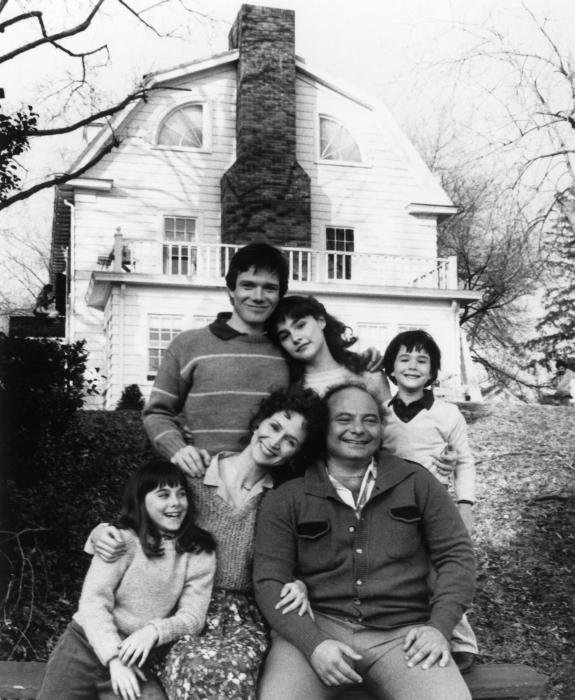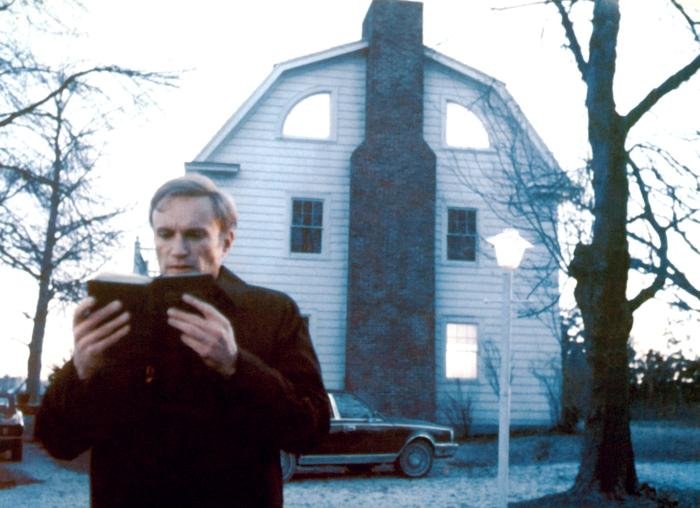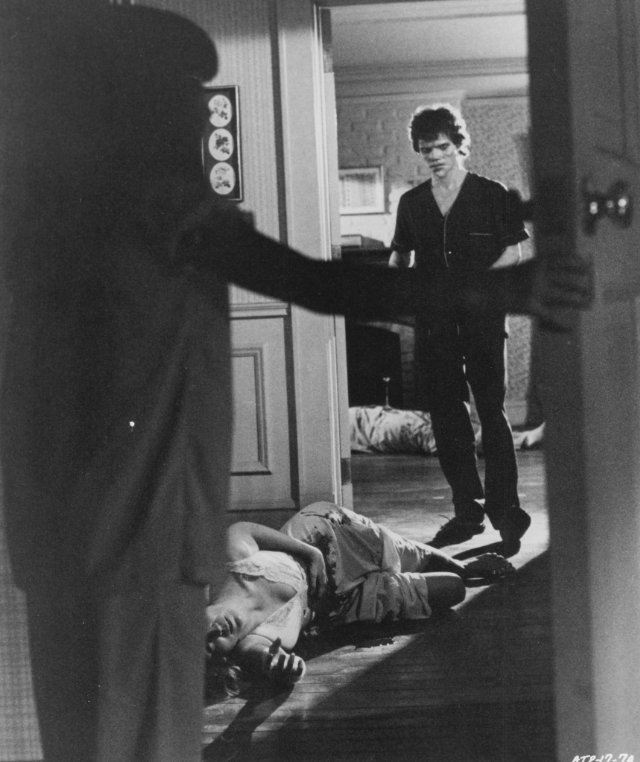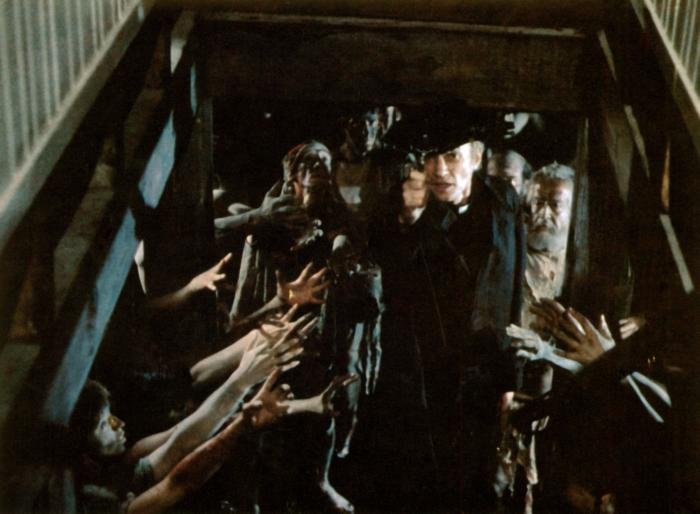AMITYVILLE II: THE POSSESSION: A Ride On The Tabloid-Terror Rollercoaster
A problem that some horror fans, particularly the younger ones, often have with the original film version of The Amityville Horror is that they consider it too slow and restrained. Neither one of those adjectives can be applied to Amityville II: The Possession. This "prequel" bypasses any concerns of subtlety or taste, instead going for the throat in a way that reflects the effects-driven style of early '80s horror and throws in a dash  of sleaze for extra excitement. The result is the most entertaining film in the original Amityville trilogy.
of sleaze for extra excitement. The result is the most entertaining film in the original Amityville trilogy.
Amityville II: The Possession is loosely based on Murder In Amityville, Hans Holzer's chronicle of the mass-murder that occured in the infamous Amityville house a year before the Lutzes moved in and his subsequent investigation of its potential paranormal roots (short version: he though murderer Ronald DeFeo was possessed). The DeFeos are replaced with the "Montellis": Anthony (Burt Young) is the abusive patriarch of the clan, Dolores (Rutanya Alda) is the long-suffering mom and there are four kids that include teens Patricia (Diane Franklin) and Sonny (Jack Magner).
The family's natural level of dysfunction rises to new heights when the house begins imposing its will on them, causing disturbances like falling mirrors and blood coming out of faucets. It soon settles on Sonny, who chafes under his father's iron rule, as a target and possesses him. His only hope is Father Adamsky (James Olson), a priest who recognizes the demonic influence affecting Sonny and is determined to fight it.
 In short, Amityville II: The Possession has no aspirations to being the respectable, mainstream-crossover horror film its predecessor was. Tommy Lee Wallace's script piles on the hokum and the sleaze with abandon: the Montellis are being assaulted with practical-effects horrors within minutes of arriving at the house and turning on each other a few minutes after that. The storyline isn't afraid to dive into deeply unsavory territory - rape, incest and child abuse are just a few of the disturbing elements at play - and when it runs out of real-life events to exploit, the last third becomes a sort of "Reader's Digest condensed version" of The Exorcist!
In short, Amityville II: The Possession has no aspirations to being the respectable, mainstream-crossover horror film its predecessor was. Tommy Lee Wallace's script piles on the hokum and the sleaze with abandon: the Montellis are being assaulted with practical-effects horrors within minutes of arriving at the house and turning on each other a few minutes after that. The storyline isn't afraid to dive into deeply unsavory territory - rape, incest and child abuse are just a few of the disturbing elements at play - and when it runs out of real-life events to exploit, the last third becomes a sort of "Reader's Digest condensed version" of The Exorcist!
However, that freedom from being "respectable" leads to a lot of choice exploitation-horror entertainment here. Indeed, Amityville II: The Possession shapes up as an entertaining shock-show because it has the courage of its sleazy convictions. It benefits from intense, visually inventive direction by Italian filmmaker Damiano Damiani. Dam iani was previously known for thoughtful, political-themed films like A Bullet For The General and Confessions Of A Police Captain but he goes for an approach here that suggests the influence of Fulci and Argento.
iani was previously known for thoughtful, political-themed films like A Bullet For The General and Confessions Of A Police Captain but he goes for an approach here that suggests the influence of Fulci and Argento.
For example, Damiani uses a prowling Steadicam to great effect, particularly during a scene where Anthony goes on a belt-whipping rampage after being awakened by ghostly mischief and a lengthy sequence where the demon stalks and possesses Sonny in a P.O.V. style. He wisely recognized the only place he could go with a story like this is over the top, so he us es Franco Di Giacomo's slick lensing and Lalo Schifrin's blood-and-thunder musical score to create a stylized atmosphere that suits the film's overheated storyline. It's also interesting to note that this film was edited by Sam O'Steen, whose steady hand guided Rosemary's Baby - and his punchy cutting plays a big role in the setpieces here.
es Franco Di Giacomo's slick lensing and Lalo Schifrin's blood-and-thunder musical score to create a stylized atmosphere that suits the film's overheated storyline. It's also interesting to note that this film was edited by Sam O'Steen, whose steady hand guided Rosemary's Baby - and his punchy cutting plays a big role in the setpieces here.
Amityville II: The Possession further benefits from an ace cast of character actors: Young and Alda give suitably operatic performances as the parents and Olson acts a straight man to the story's mayhem, bringing a veteran actor's gravitas to a role that requires him to remain stoic in the midst of a barrage of theatrical special effects. Familiar faces like Moses Gunn, Leonardo Cimino and Andrew Prine also lend credible support in bit roles.
However, the big scene stealers are Franklin and Magner. Franklin brings a vulnerability and charm to her performance that makes it difficult to watch when the story requires for her to suffer while Magner gives a physically intense port rait of possession that lives up to the film's larger than life style. It's surprising that Magner didn't go on to a bigger career in horror films as his go-for-the-gusto performance here is one of the film's biggest assets.
rait of possession that lives up to the film's larger than life style. It's surprising that Magner didn't go on to a bigger career in horror films as his go-for-the-gusto performance here is one of the film's biggest assets.
In short, Amityville II: The Possession is an undeniable example of horror as exploitation, taking the elements of a ghoulish real-life tale and shamelessly pumping it up with extra shock theatrics to appeal to the horror crowd. It's also stylishly made, much better acted than you'd expect and packed with enough cheap thrills for two movies. It does what it does very well and if you go for its tabloid-terror approach to the genre, you'll find the results hard to resist.


